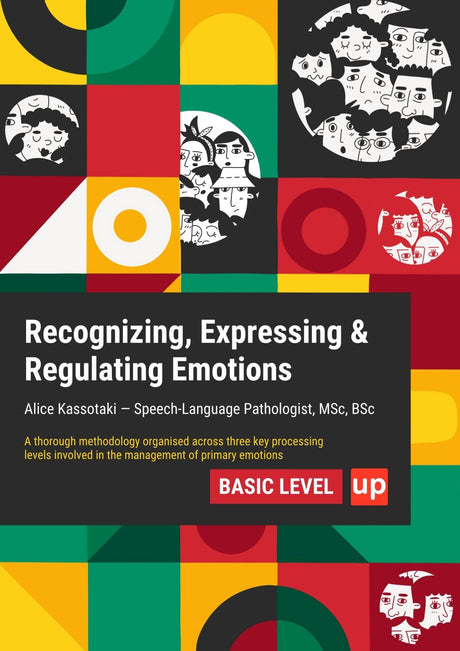OCPD vs Autism: Key Differences, Symptoms, and Treatments
Curious about the differences between OCPD vs autism? While both conditions share some similarities, they are unique in their symptoms and treatments. This article breaks down the main distinctions between Obsessive-Compulsive Personality Disorder (OCPD) and Autism Spectrum Disorder (ASD) to help you understand and manage these conditions better.
Key Takeaways
- OCPD is a personality disorder characterized by perfectionism and control, while Autism Spectrum Disorder (ASD) is a neurological and developmental disorder that affects communication and social interaction.
- Both conditions share overlapping symptoms, such as repetitive behaviors and difficulties with emotional expression, which can complicate accurate diagnosis and treatment.
- Treatment approaches for OCPD and ASD differ, with OCPD focusing on psychotherapy to address perfectionism, and ASD utilizing behavioral therapies for skill development and communication improvement.
Understanding Obsessive Compulsive Personality Disorder (OCPD)

Obsessive-Compulsive Personality Disorder (OCPD) is a personality disorder characterized by a preoccupation with rules, lists, schedules, and an overwhelming need for perfection and control that can significantly impact interpersonal relationships. This excessive devotion to work and productivity often leads to task delays and may prevent individuals from completing tasks due to their rigid perfectionism. OCPD individuals tend to hold back emotions until they can express them perfectly, prioritizing work over relaxation and leisure activities.
People with OCPD often struggle with interpersonal control, leading to high conflict in relationships and scrutinizing communication. Understanding OCPD traits is crucial for differentiating it from other personality disorders and mental health conditions, such as Narcissistic Personality Disorder or Obsessive-Compulsive Disorder (OCD). Identifying these traits is essential for offering appropriate support and treatments to OCPD individuals.
What is Autism Spectrum Disorder (ASD)?
Autism Spectrum Disorder (ASD) is a neurological and developmental condition that affects the way people interact, communicate, learn, and behave.
Typically identified within the first two years of life, ASD affects communication, social interactions, and sensory perception.
The essential features of autism include:
- Persistent impairments in social interactions
- Impairments in communication
- Restricted activities
- Repetitive behaviors
Autistic people experience a broad spectrum of symptoms, from variations in social behaviors and communication skills to intellectual disabilities and co-occurring health conditions that affect overall well-being. Autism affects each person differently, so recognizing both autism spectrum disorder traits and the unique impacts on daily life is crucial.
Key Differences Between OCPD and Autism

While both OCPD and Autism Spectrum Disorder (ASD) involve a focus on details and repetitive behaviors, they are clinically distinct conditions that require different approaches for effective management. Individuals with OCPD exhibit an excessive focus on work and productivity, often leading to significant impacts on interpersonal relationships. In contrast, autistic individuals may engage in routine-centered behaviors primarily for emotional regulation.
Additionally, autistic traits may involve motor deficits or self-injurious behaviors, which are less common in OCPD. These distinctions help healthcare professionals and caregivers offer tailored support and treatment.
Overlapping Symptoms of OCPD and Autism

Obsessive-Compulsive Personality Disorder (OCPD) and Autism Spectrum Disorder (ASD) share several overlapping symptoms, which can complicate accurate diagnosis. Both conditions are characterized by repetitive behaviors and a fixation on details. These shared traits can lead to misdiagnosis, where individuals with OCPD are mistakenly diagnosed with autism and vice versa.
Emotional expression is another area where OCPD and autism overlap. Individuals with OCPD often struggle with emotional expression, leading to challenges in understanding others’ feelings. Similarly, autistic people may face persistent deficits in social communication and interaction. Differentiating these overlapping symptoms is vital for accurate diagnosis and effective treatment.
Causes and Risk Factors
Both genetic and environmental factors play significant roles in the onset of Obsessive-Compulsive Personality Disorder (OCPD) and Autism Spectrum Disorder (ASD). Family history is a considerable risk factor, with research indicating that genetic inheritance can elevate the likelihood of developing these conditions. Mutations in genes critical for growth have been implicated in both OCPD and autism, with 444 genes showing altered activity.
Environmental factors also contribute to the complexity of these conditions. Prenatal conditions such as maternal stress, nutritional deficiencies, and exposure to certain environmental toxins during pregnancy may affect the development of autism.
These genetic and environmental influences are key to developing effective interventions and support strategies for individuals with OCPD and autism.
Genetic Factors in OCPD and Autism
Studies have identified specific gene mutations that may be linked to both OCPD and autism, highlighting the importance of genetics in understanding these conditions. Research suggests that genetic variations contribute significantly to the risk of developing autism, with several genes being implicated. These genetic factors are crucial in understanding both OCPD and autism, as they influence their development and can aid in the creation of targeted treatments and interventions.
The role of genetics helps differentiate OCPD from autism and other personality disorders, offering insights into their hereditary nature and paving the way for personalized treatment approaches.
Environmental Factors Influencing OCPD and Autism
Environmental factors, such as prenatal conditions and societal influences, significantly impact the development of OCPD and autism. Conditions like maternal diabetes, medication use, and exposure to contaminants can have lasting effects on developing children. Additionally, cultural communities, specific professions, and religious groups that emphasize productivity may foster traits associated with OCPD.
The combination of these environmental factors and societal influences contributes to a complex interplay that affects the development and expression of OCPD and autism. Recognizing these influences helps create supportive environments that mitigate the risk factors associated with these conditions.
Diagnosis: OCPD vs Autism
Effective treatment relies on accurate diagnosis, particularly when distinguishing between OCPD and ASD. The diagnostic and statistical manual (DSM-5) offers specific criteria for diagnosing both conditions, ensuring individuals receive appropriate care and support. Accurate diagnosis aids in managing symptoms and developing tailored treatment plans.
OCPD often coexists with other mental disorders like anxiety, substance use, and mood disorders, complicating diagnosis. Knowing the diagnostic criteria for both OCPD and autism is crucial for differentiation and effective treatment.
Diagnostic Criteria for OCPD
A diagnosis of Obsessive-Compulsive Personality Disorder (OCPD) requires the presence of specific ocd symptoms and impairment in functioning, typically emerging in early adulthood. For a valid diagnosis, four or more of the eight specified symptoms must be present, including rigid perfectionism and an excessive need for order. These symptoms must cause significant impairment in at least two areas of personality functioning.
A detailed assessment, ruling out other medical conditions, and using integrated assessment tools and clinical judgment are vital for an accurate OCPD diagnosis and treatment.
Diagnostic Criteria for Autism
Autism Spectrum Disorder (ASD) is typically diagnosed by a psychologist or developmental physician using the DSM-5. An autism diagnosis requires the identification of symptoms across five major categories, including social communication, repetitive behaviors, and sensory perception. These disturbances cannot be attributed to global developmental delay. They also cannot be explained by an intellectual development disorder.
Psychologists employ specific tests to assess autism severity, ensuring accurate diagnosis. This professional assessment is key to developing effective, individualized treatment plans.
Treatment Options for OCPD and Autism

Treating OCPD and ASD typically involves psychotherapy, behavioral therapies, and medications. Cognitive Behavioral Therapy (CBT) has proven effective for both conditions, aiding symptom management and improving quality of life.
Behavioral therapies for autism emphasize reinforcing positive behaviors and skill development. Medications can also manage co-occurring disorders like anxiety and depression, enhancing therapeutic interventions.
Psychotherapy for OCPD
Psychotherapy for individuals with Obsessive-Compulsive Personality Disorder (OCPD) focuses on uncovering fears or motivations related to their perfectionism. Common therapeutic techniques include Interpersonal Therapy, Schema Therapy, Nidotherapy, and Dialectical Behavioral Therapy (DBT). Cognitive Behavioral Therapy (CBT) is particularly effective, helping individuals address automatic negative thoughts and restructure dysfunctional thinking patterns.
Relaxation techniques often help reduce anxiety and worry in OCPD. Nidotherapy, which adapts the environment to the individual, can enhance therapy. These approaches help OCPD individuals recognize alternative outcomes to their fears and improve well-being.
Behavioral Therapies for Autism
Behavioral therapies for Autism Spectrum Disorder (ASD) emphasize positive reinforcement and skill development tailored to individual needs. Applied Behavior Analysis (ABA) is a widely recognized therapy that reinforces positive behaviors in children with autism. Speech-language therapy helps improve articulation and grammar. It also enhances functional speech and social communication skills.
Occupational therapy covers effective communication, sensory integration, emotional regulation, self-care routines, and motor development. Intensive behavioral interventions enhance communication, behavior, and social skills, equipping autistic individuals with essential tools for daily life.
Pharmacological Treatment
Pharmacological treatment for OCPD and ASD includes medications to manage symptoms and co-occurring conditions. While no specific medications are approved for OCPD, those for anxiety or depression, like SRIs, benzodiazepines, and anticonvulsants, may help alleviate symptoms.
In autism, managing anxiety and depression can reduce symptoms and increase behavioral flexibility. However, understanding medication side effects is crucial before starting treatment. Careful consideration enhances the effectiveness of therapeutic interventions for both conditions.
Co-occurrence of OCPD and Autism

The co-occurrence of Obsessive-Compulsive Personality Disorder (OCPD) and Autism Spectrum Disorder (ASD) presents unique challenges for diagnosis and treatment. Studies show that approximately 9% to 32% of individuals with autism may also have co-occurring OCPD, complicating treatment approaches. Additionally, 40% of adults diagnosed with autism meet criteria for co-morbid OCPD.
Recognizing this co-occurrence is key to developing therapeutic strategies that address both conditions. While OCPD and autism traits can coexist, they do not cause each other. Tailored treatments that consider overlapping symptoms and unique needs are essential for successful management.
The Role of Transcranial Direct Stimulation (tDCS)
Transcranial Direct Current Stimulation (tDCS) is a non-invasive technique that applies a weak electric current to stimulate brain function, which can alleviate symptoms of OCPD and autism. Research indicates that tDCS can effectively manage obsessive-compulsive behaviors and enhance cognitive functions such as attention and memory in patients with autism.
Using tDCS has been associated with reducing symptoms of depression and anxiety common in both OCPD and autism. Devices like ARC-tDCS offer a holistic treatment experience for mental health disorders, presenting a promising alternative or complement to traditional therapies.
Can OCPD Cause Autism or Vice Versa?
There is a common misconception that Obsessive-Compulsive Personality Disorder (OCPD) can cause Autism Spectrum Disorder (ASD) or vice versa. However, current research does not support this notion. Although OCPD and autism can coexist, one does not cause the other. Their co-occurrence may result from shared risk factors or diverse presentations.
Both OCPD and autism share overlapping symptoms such as fixation on details and repetitive behaviors, complicating the diagnostic process. Genetic and environmental factors appear to influence both conditions, potentially contributing to their development but do not imply causation between the two. Understanding these distinctions is vital for accurate diagnosis and effective treatment.
Summary
In summary, Obsessive-Compulsive Personality Disorder (OCPD) and Autism Spectrum Disorder (ASD) are distinct conditions with unique characteristics, despite some overlapping symptoms. Understanding the key differences between OCPD and autism is crucial for accurate diagnosis and effective management. Genetic and environmental factors play significant roles in the development of both conditions, and tailored treatment approaches are essential for addressing their unique needs.
Effective treatment for OCPD and autism often involves a combination of psychotherapy, behavioral therapies, and pharmacological interventions. Recognizing the co-occurrence of these conditions and utilizing advanced techniques like Transcranial Direct Current Stimulation (tDCS) can enhance therapeutic outcomes. By gaining a deeper understanding of OCPD and autism, individuals, caregivers, and healthcare professionals can better navigate these complex mental health disorders and improve the quality of life for those affected.
Frequently Asked Questions
What are the main differences between OCPD and autism?
The main differences between OCPD and autism lie in their motivations and behaviors: OCPD centers on work and productivity, whereas autism involves routine behaviors for emotional regulation, along with more frequent motor deficits and self-injurious behaviors. Understanding these distinctions can aid in better recognition and support for individuals with these conditions.
Can someone have both OCPD and autism?
Yes, individuals can have both OCPD and autism, and this comorbidity can complicate diagnosis and treatment. It's important to consider both conditions for effective management.
What role do genetic factors play in the development of OCPD and autism?
Genetic factors significantly influence the development of both OCPD and autism, with specific gene mutations associated with each condition. Recognizing these genetic links can enhance the approach to targeted treatments.
How are OCPD and autism diagnosed?
OCPD and autism are diagnosed using the criteria in the DSM-5; OCPD requires symptoms of rigid perfectionism and functional impairment, while autism focuses on social communication difficulties and repetitive behaviors. Accurate assessment across these criteria is essential for a correct diagnosis.
What treatment options are available for OCPD and autism?
Psychotherapy, particularly Cognitive Behavioral Therapy (CBT) and behavioral therapies such as Applied Behavior Analysis (ABA), are effective treatment options for both OCPD and autism. Additionally, pharmacological interventions can help manage co-occurring issues like anxiety and depression.
References
- American Psychiatric Association. (2013). Diagnostic and statistical manual of mental disorders (5th ed.). Arlington, VA: American Psychiatric Publishing.
- Anholt, G. E., Cath, D. C., van Oppen, P., Eikelenboom, M., Smit, J. H., van Megen, H., & van Balkom, A. J. (2011). Autism and ADHD symptoms in patients with OCD: Are they associated with specific OC symptom dimensions or OC symptom severity? Journal of Autism and Developmental Disorders, 41(4), 475-482.
- Baron-Cohen, S. (2009). Autism: The empathizing-systemizing (E-S) theory. Annals of the New York Academy of Sciences, 1156(1), 68-80.
- Fineberg, N. A., Sharma, P., Sivakumaran, T., Sahakian, B., & Chamberlain, S. R. (2007). Does obsessive-compulsive personality disorder belong within the obsessive-compulsive spectrum? CNS Spectrums, 12(6), 467-482.
- Lai, M. C., Lombardo, M. V., & Baron-Cohen, S. (2014). Autism. The Lancet, 383(9920), 896-910.
- Lochner, C., & Stein, D. J. (2006). Heterogeneity of obsessive-compulsive disorder: a literature review. Harvard Review of Psychiatry, 14(6), 327-339.
- Simonoff, E., Pickles, A., Charman, T., Chandler, S., Loucas, T., & Baird, G. (2008). Psychiatric disorders in children with autism spectrum disorders: Prevalence, comorbidity, and associated factors in a population-derived sample. Journal of the American Academy of Child & Adolescent Psychiatry, 47(8), 921-929.









